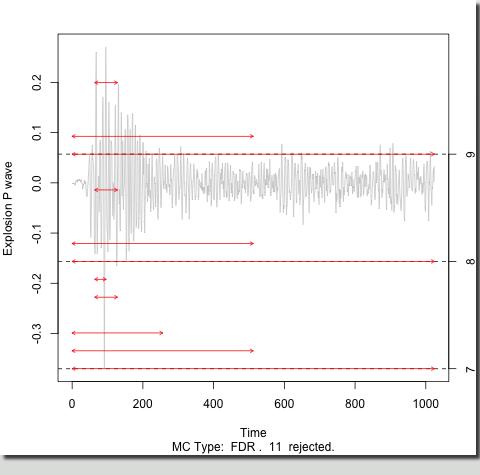 |
Naive Local Autocovariance Estimation on Segments
So, if autocovariance and autocorrelation can vary for a nonstationary time series and we need to estimate c(t,k), how can we do that (or rather get a computer to do it for us)? There are several possible solutions, some good, some not so good.
One easy solution is to find the point in time that you are interested in, t say and gather together (in time order, of course) all of the time series points near to t and apply the regular autocovariance method to that segment. That sounds pretty good, but there are a number of problems with this approach.
Taking segments will indeed give you `localized' estimates, but how long should your segment be? Should it be of length 10, 20, 50 or longer? Of course, choosing longer segment lengths should give better estimates of the local autocovariance, but as the segment length gets longer the estimate is becoming less and less local. On the other hand, if your segment is very short then there is no way you are going to be able to estimate the longer lags. For example, if your segment length was 10 how are you going to estimate an autocovariance at lag 11? Do you take overlapping or non-overlapping segments? How do you form confidence intervals when you have the results of many, possible overlapping segments?
Pretty soon the segmented solution does not sound so attractive. A better solution is maybe to estimate the whole quantity c(t, k) in one go.
|
 |

